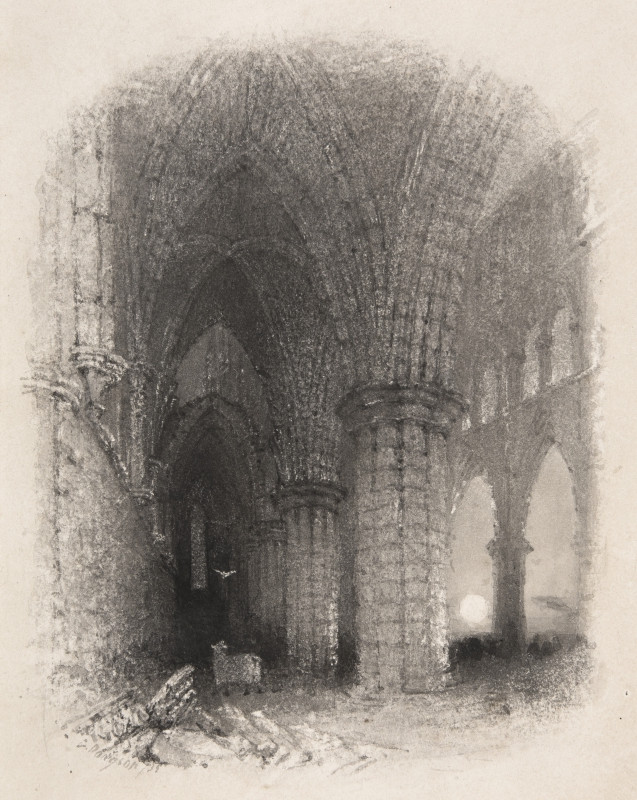
(click image to enlarge)
Notwithstanding the loss of its tower, enough yet remains of Whitby’s 'cloistered pile' to make it deserving of the attention of the artist, the antiquary, and the man of taste and feeling. The more closely the ruins are examined the more beautiful and curious do they appear; and, varying in general effect with every change of atmosphere, they form a never-failing subject of interest and contemplation … the evening and moonlight effects are undoubtedly the finest,
'When the broken arches are black in night,
And each shafted oriel glimmers white,'
When we may hear the
'Owlet hoot o’er the dead man’s grave,'
and the low murmur of the waves beneath, forming an accompaniment completely in unison with the scene.
(Henry Belcher, Scenery of the Whitby and Pickering Railway, pages 1-2)